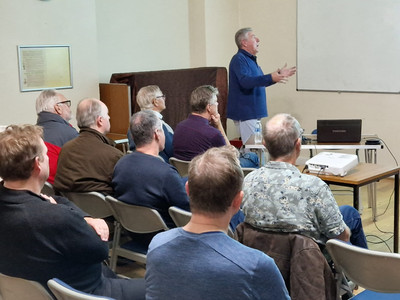HoA: Herschel, Bode, and the Origin of the Flamsteed Numbers, by Dr Wolfgang Steinicke
- Mark Jeffery

- Oct 18, 2023
- 1 min read
It was a pleasure to welcome Dr Wolfgang Steinicke to give us the second talk in the History of Astronomy series for this term. Wolfgang is an eminent speaker, with extensive research interests in the Herschel’s, Flamsteed and Edmund Halley.
The story of how we began cataloguing stars goes back a long way, and involved some prominent names, but unlike some of today’s astronomers, little collaboration, and much rivalry!

John Flamsteed, the first astronomer royal, meticulously catalogued 3500 stars between 1689-1700. He was a bit of pedant and kept them hidden, and didn’t publish, they were kept under seal at the Royal Observatory in Greenwich.
In 1721, Isaac Newton, the then president of the Royal Society, and Edmund Halley, the second Astronomer Royal, found his data, and published a pirated copy of a star catalogue using Flamsteed’s numbers.
400 copies were printed, and 100 sold.
It appears that Flamsteed was furious and bought the remaining copies and destroyed them, keeping one. He is quoted as saying: “If Sir I.N. would be sensible of it, I have done both him and Dr Halley a great kindness.”

In 1725 Flamsteed’s catalogue Historia Coelestis Britannica was published posthumously, and edited by his wife, Margaret. It listed 2,935 stars to a much greater accuracy than any previous work.
If you would like to hear more about this fascinating story, please see the video recording of the talk on our website.
Don’t miss our next talk in this series “The Story of the Herschel’s”, on November 23rd.























Comments